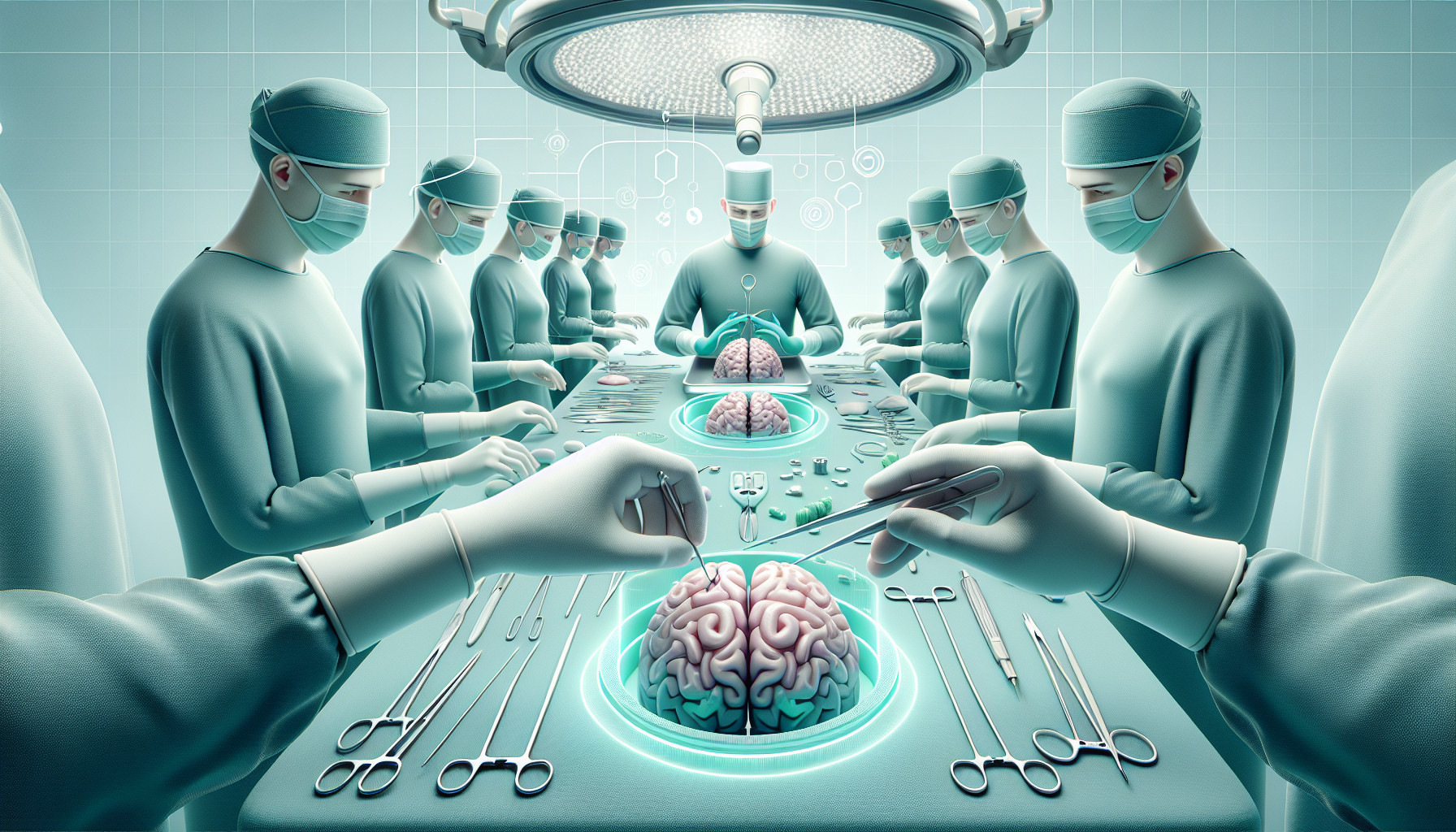Our Summary
Deep Brain Stimulation (DBS) surgery is a treatment for certain neurological conditions. However, its success relies heavily on the precise placement of electrodes in the brain. One challenge surgeons face is that the brain can move slightly during surgery, which can cause the electrodes to be placed incorrectly. This movement, known as ‘brain shift,’ can occur when a hole is drilled into the skull and the outer layer of the brain is exposed.
In this study, the researchers aimed to tackle the issue of brain shift. They conducted a study on six patients who underwent DBS surgery, using a technique involving magnetic resonance imaging (MRI). They created patient-specific models that predicted how the brain might shift during surgery under different conditions. This resulted in a ‘deformation atlas,’ or collection of possible shifts. Using these models and comparing them to MRI images taken during surgery, they were able to better predict the brain shift and adjust their surgical approach accordingly.
The results showed that the model-based approach significantly reduced the amount of brain shift, from an average of 8.2mm to 2.7mm. This strategy led to more accurate electrode placement, with an average shift at the target region of only 1.2mm. The researchers concluded that this model-based strategy could be a useful tool in DBS surgery to correct for brain shift, potentially enhancing the current surgical approaches.
FAQs
- What is ‘brain shift’ and how does it affect Deep Brain Stimulation (DBS) surgery?
- How did the researchers in the study aim to tackle the issue of brain shift during DBS surgery?
- What were the results of the study and how might they impact future DBS surgeries?
Doctor’s Tip
A doctor might tell a patient undergoing brain surgery to discuss with their surgeon the use of advanced techniques such as MRI-based models to reduce the risk of brain shift and improve the accuracy of electrode placement. This can help increase the chances of a successful outcome and minimize potential complications. It’s important for patients to be proactive in their care and advocate for the best possible treatment options.
Suitable For
Patients who are typically recommended for brain surgery include those with conditions such as Parkinson’s disease, essential tremor, dystonia, and obsessive-compulsive disorder. These conditions may not respond well to medication or other treatments, and surgery may offer a more effective solution. Additionally, patients who experience severe and debilitating symptoms that significantly impact their quality of life may be candidates for brain surgery. It is important for patients to undergo a thorough evaluation by a neurologist and neurosurgeon to determine if they are suitable candidates for brain surgery.
Timeline
Before brain surgery, a patient typically undergoes a series of consultations, tests, and evaluations to determine the best course of treatment. This may include imaging scans, neurological exams, and discussions with the surgical team. The patient will also be educated on the procedure, risks, and recovery process.
During the surgery, the patient is placed under general anesthesia and the surgical team makes an incision in the scalp to access the brain. In the case of DBS surgery, electrodes are implanted into specific areas of the brain to help regulate abnormal brain activity. The surgery can take several hours, and the patient may need to stay in the hospital for observation and recovery.
After surgery, the patient will require close monitoring to ensure there are no complications. Pain management, medication adjustments, and physical therapy may be necessary to aid in recovery. Follow-up appointments with the surgical team and neurologist will be scheduled to monitor progress and make any necessary adjustments to the treatment plan.
Overall, the timeline of a patient’s experience before and after brain surgery involves careful preparation, the surgical procedure itself, and ongoing care and support to ensure the best possible outcome.
What to Ask Your Doctor
Some questions a patient should ask their doctor about brain surgery, specifically Deep Brain Stimulation (DBS) surgery, include:
- What is the success rate of DBS surgery for my specific condition?
- How will you ensure the precise placement of electrodes in my brain during surgery?
- Have you used the technique involving MRI and patient-specific models to predict brain shift before?
- What are the potential risks or complications associated with DBS surgery?
- How long is the recovery process after DBS surgery and what can I expect during that time?
- Will I need to undergo any additional tests or procedures before the surgery?
- What are the alternative treatment options available for my condition, and how does DBS surgery compare to them?
- How experienced are you and your surgical team in performing DBS surgery?
- What kind of follow-up care will be required after the surgery, and how often will I need to see my healthcare provider?
- Are there any lifestyle changes or restrictions I should be aware of post-surgery?
Reference
Authors: Luo M, Larson PS, Martin AJ, Miga MI. Journal: IEEE Trans Biomed Eng. 2020 Oct;67(10):2934-2944. doi: 10.1109/TBME.2020.2974102. Epub 2020 Feb 14. PMID: 32078527
